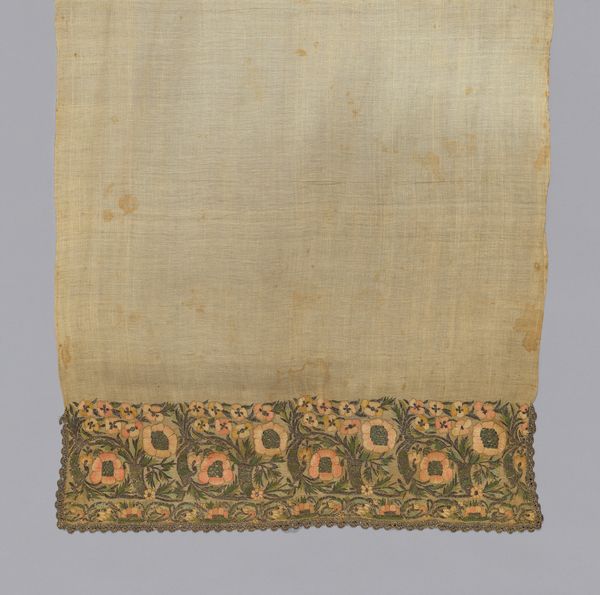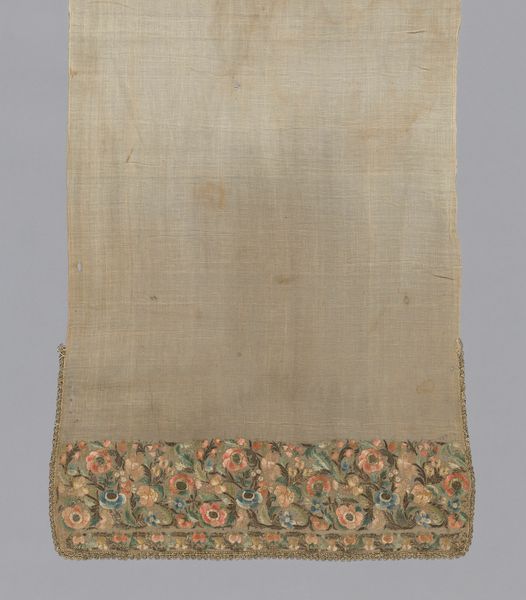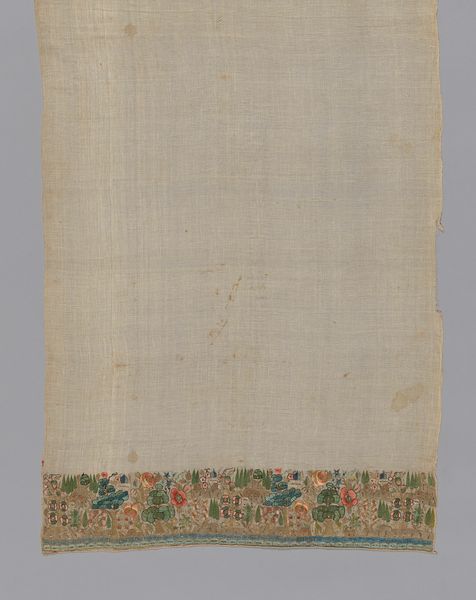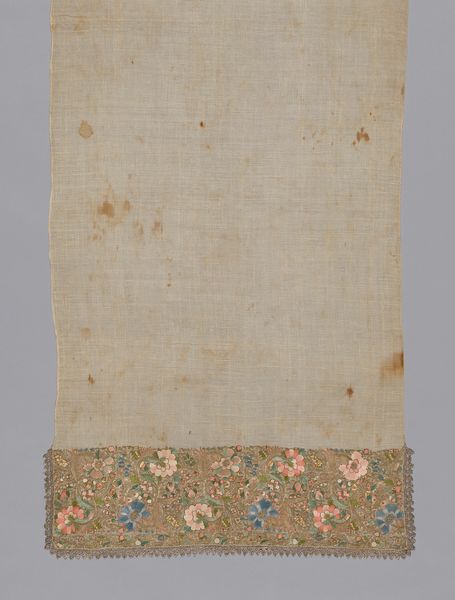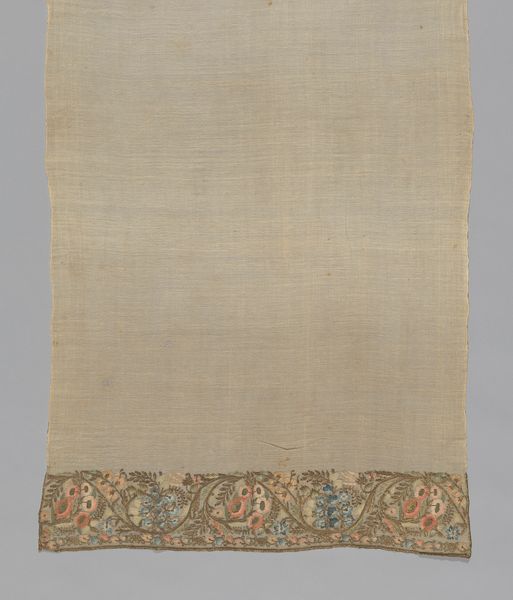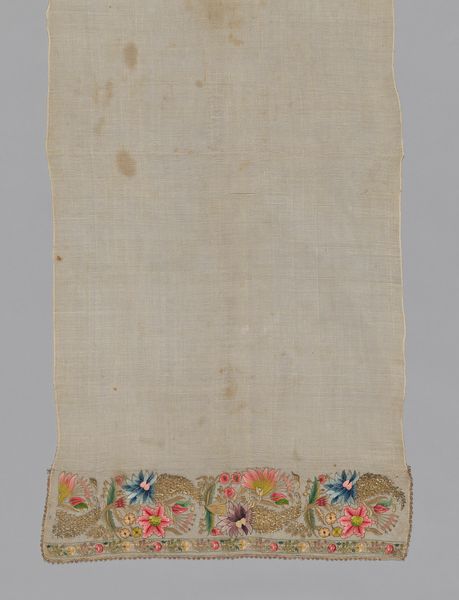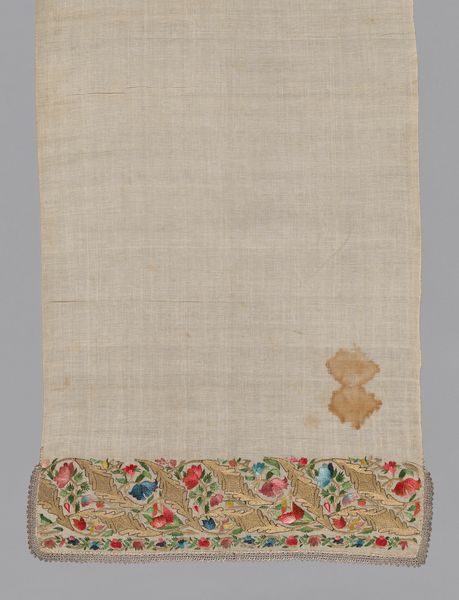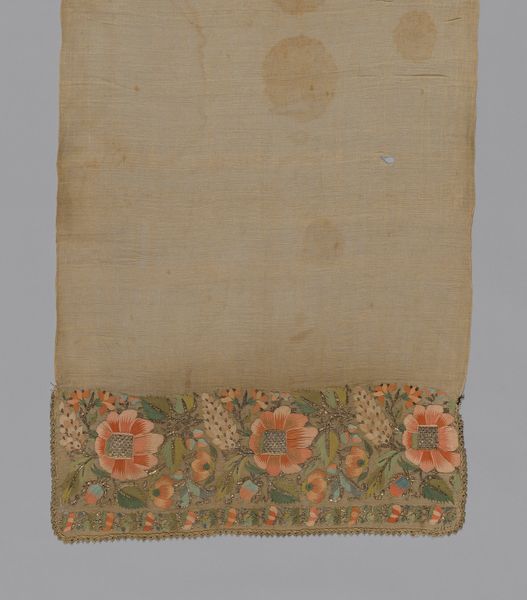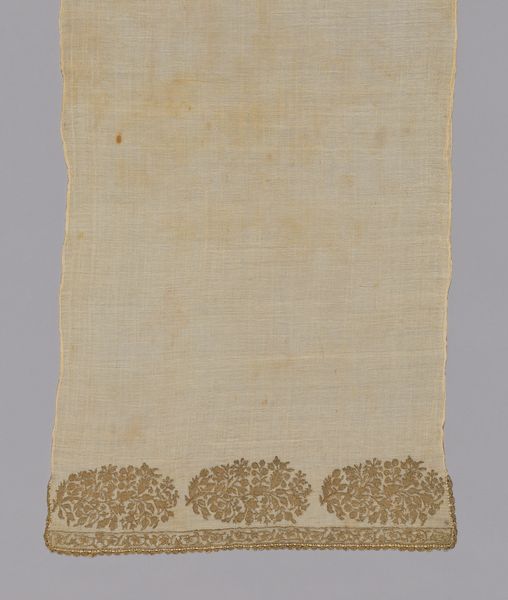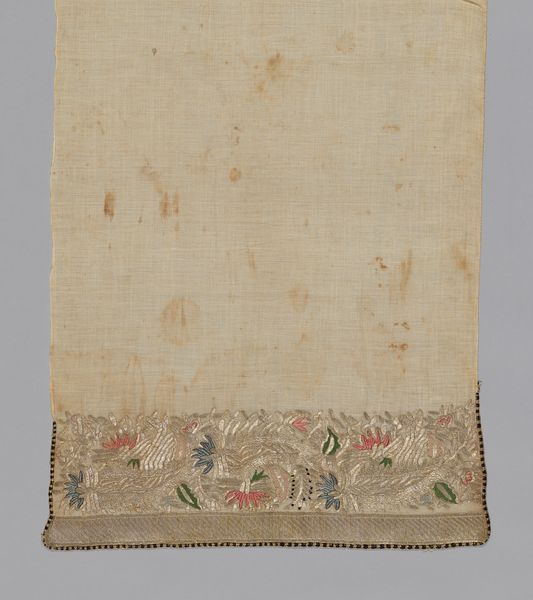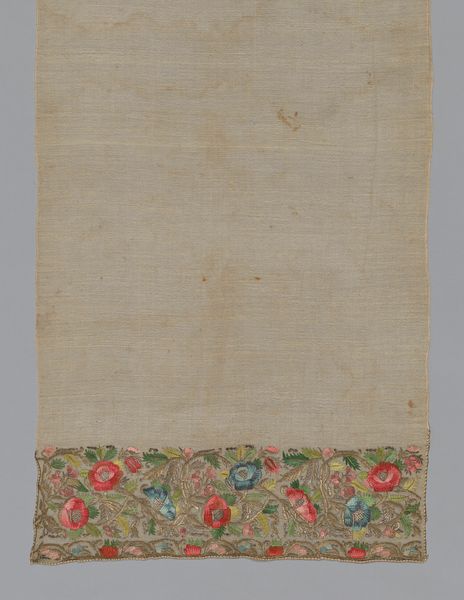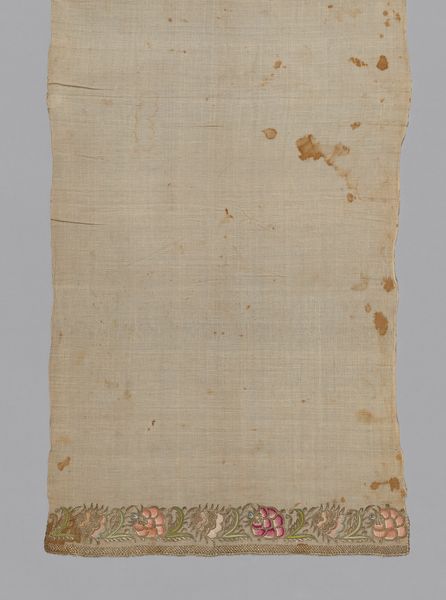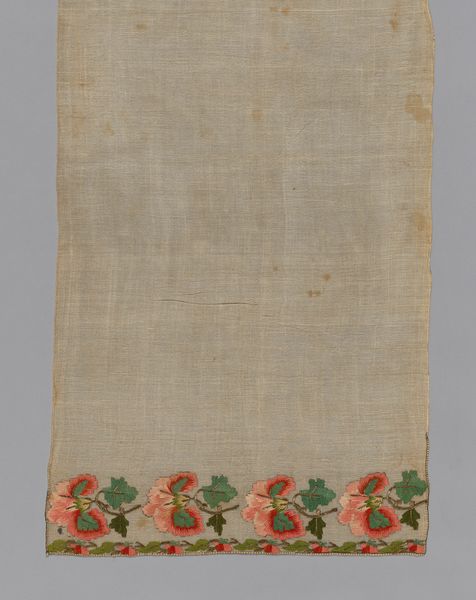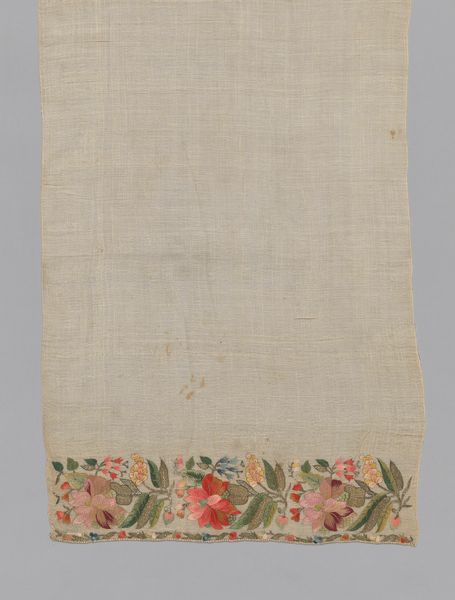
fibre-art, weaving, textile
#
fibre-art
#
weaving
#
textile
#
decorative-art
Dimensions: 201 × 67.2 cm (79 1/8 × 26 1/2 in.)
Copyright: Public Domain
Editor: Here we have "Towel," an anonymous textile artwork dating back to between 1850 and 1900. It's on display here at The Art Institute of Chicago. The combination of the delicate weave and the elaborate embroidered floral border gives it such a lovely, almost sentimental feel. What sort of symbolic weight do you think we can attach to a piece like this? Curator: That’s a wonderful way to describe the feeling it evokes. It seems, on the surface, to be purely decorative, but objects associated with the body, even indirectly, carry intimate stories. How does it alter your interpretation to know that it’s a towel? Does it speak of domesticity? Ritual? Editor: Definitely domesticity, it brings thoughts of family to mind. The care and effort involved in creating the floral pattern suggests a labor of love, maybe prepared as part of a trousseau? Curator: Precisely. Consider the flowers themselves – can you discern what kind they are? Could these choices have significance beyond mere aesthetic appeal? The rose, for example, traditionally represents love, but also secrecy. Is there something concealed within this domestic image? The cultural memory embedded in even these humble textiles… Editor: I hadn’t thought about it that deeply before. Now I am wondering, did the flowers used to decorate the towel carry different meanings in that time? Curator: Undoubtedly. A rose may speak to love or beauty. Lily represents purity and hope. Each tiny addition to the fabric represents not only care, but a coded language, echoing shared knowledge. Even now, without perfectly knowing its origins, don't you feel like the work communicates the importance of tenderness in domestic life? Editor: I do. The towel isn’t just an object; it's a whispered story passed down through generations. I am never going to look at textiles in the same way. Curator: It transforms everyday objects into powerful witnesses. This textile work, therefore, becomes an archive in threads.
Comments
No comments
Be the first to comment and join the conversation on the ultimate creative platform.
